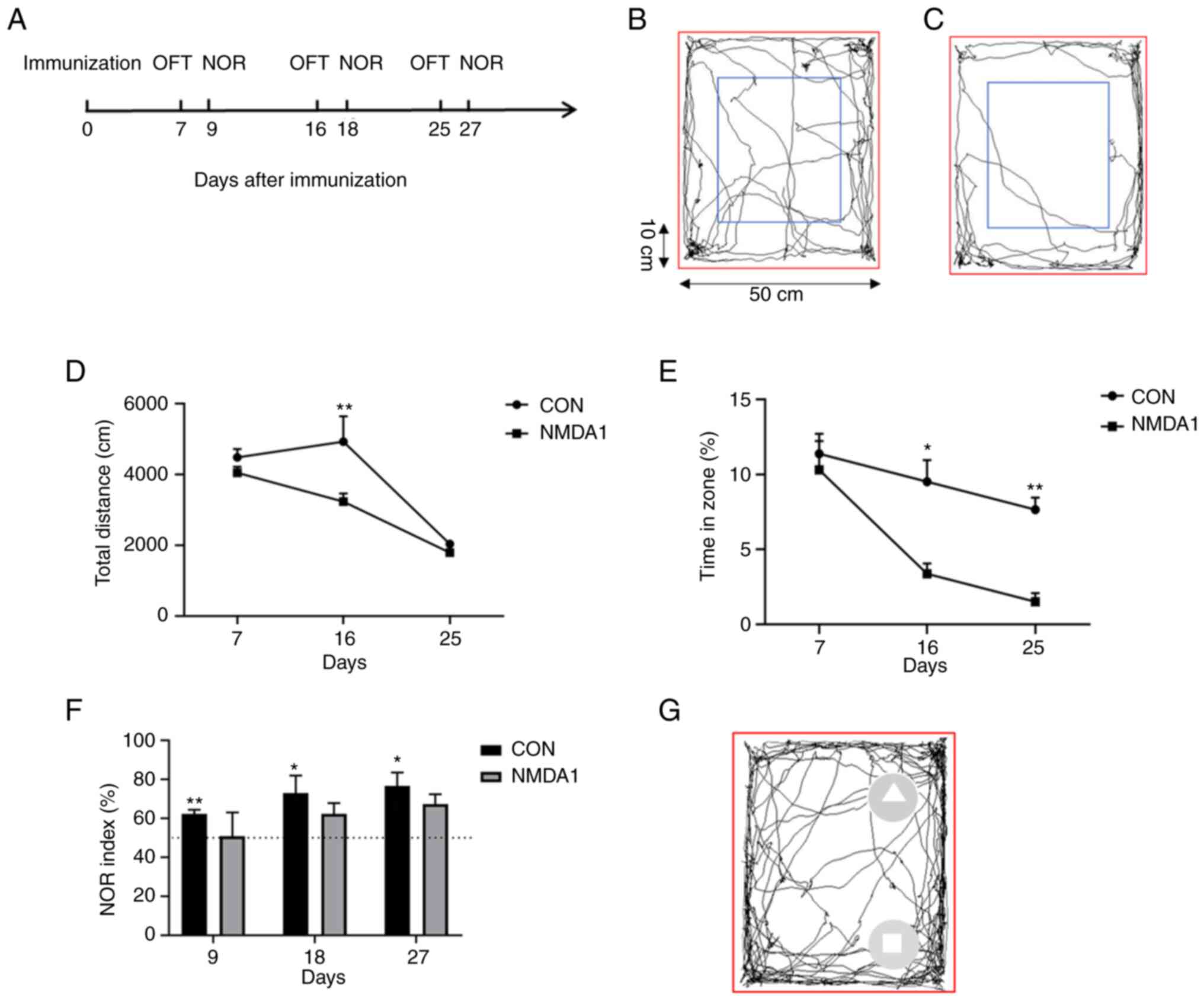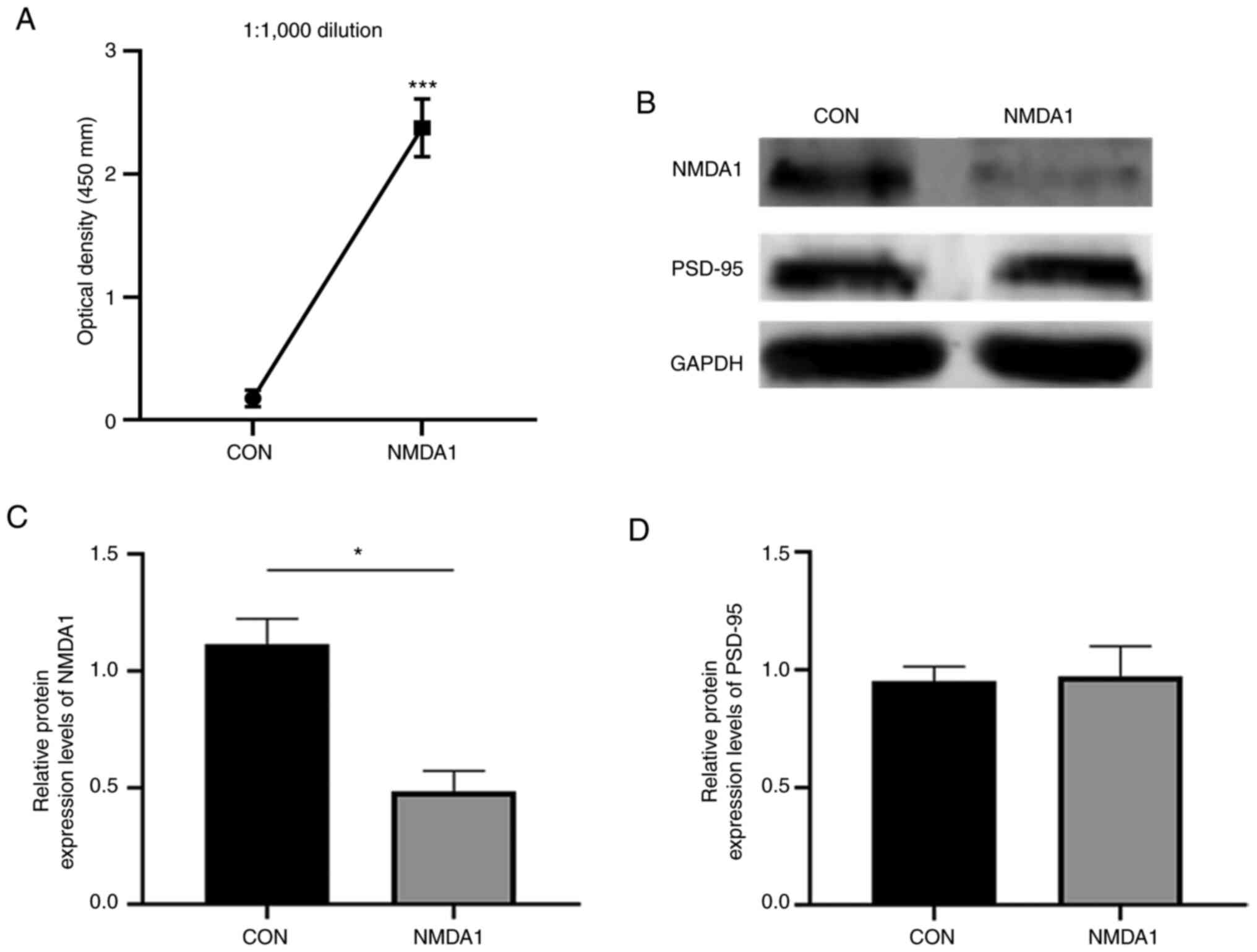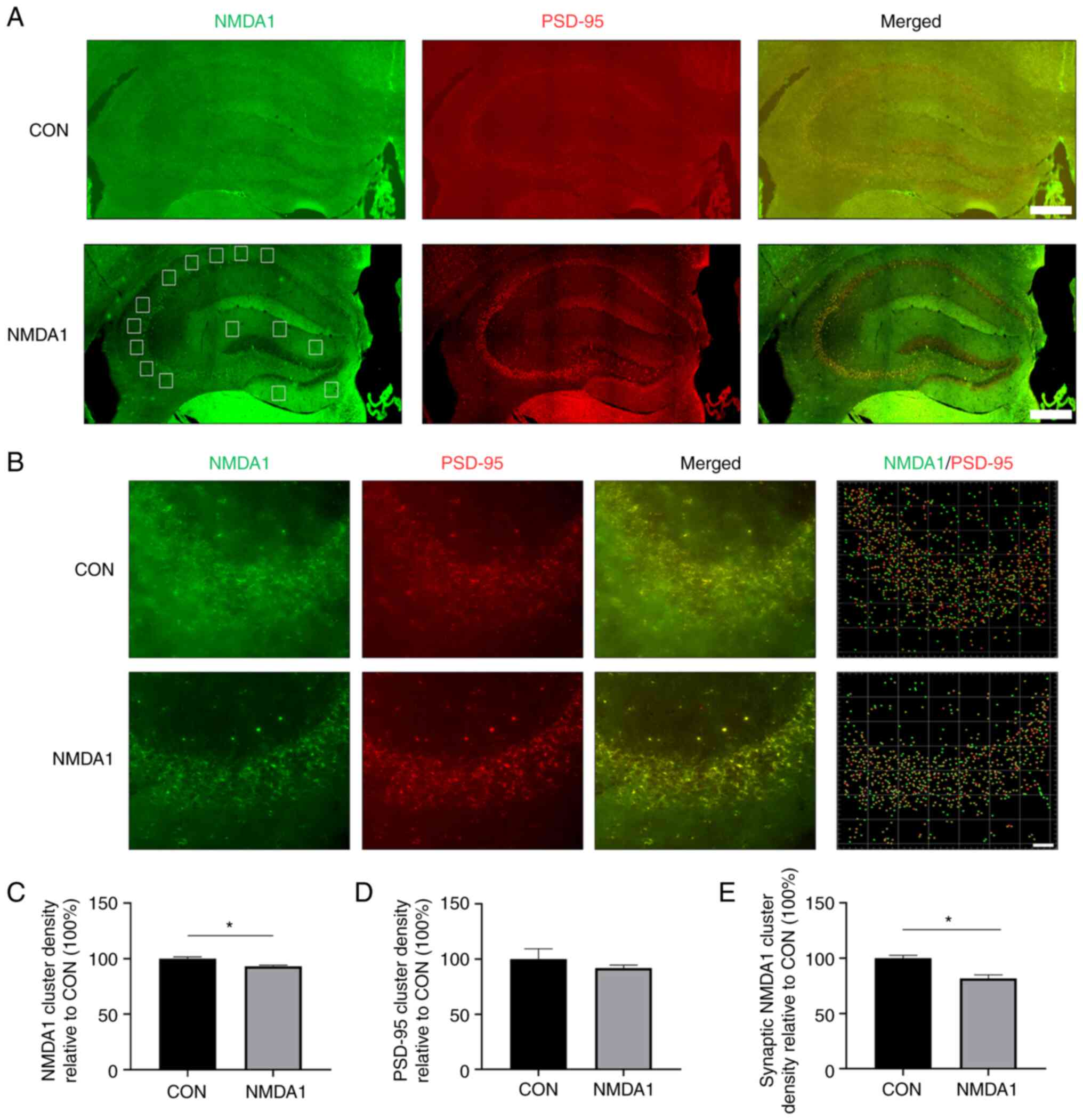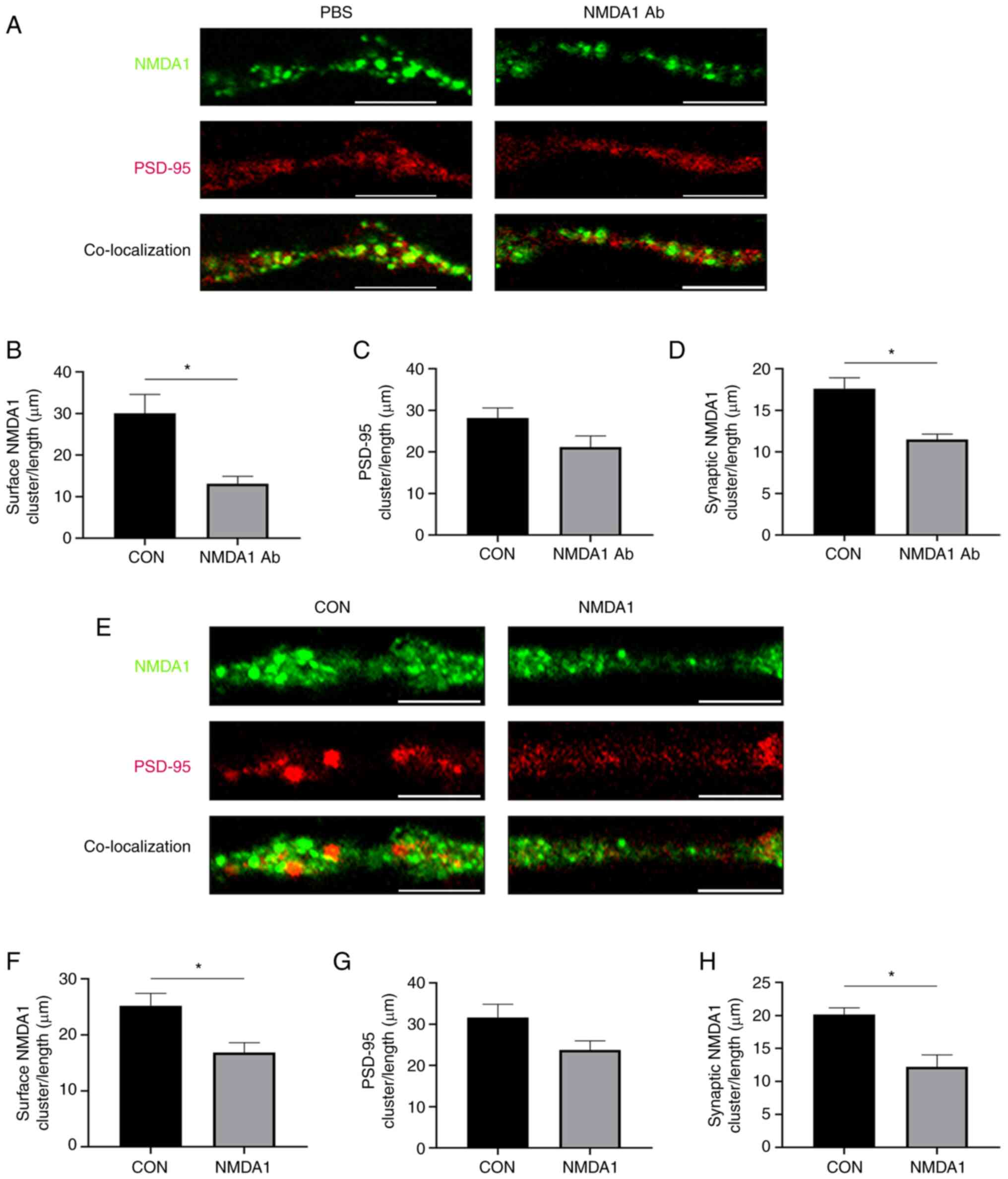|
1
|
Yang J and Liu X: Immunotherapy for
refractory autoimmune encephalitis. Front Immunol. 12:7909622021.
View Article : Google Scholar : PubMed/NCBI
|
|
2
|
Mikasova L, De Rossi P, Bouchet D, Georges
F, Rogemond V, Didelot A, Meissirel C, Honnorat J and Groc L:
Disrupted surface cross-talk between NMDA and Ephrin-B2 receptors
in anti-NMDA encephalitis. Brain. 135:1606–1621. 2012. View Article : Google Scholar : PubMed/NCBI
|
|
3
|
Planagumà J, Leypoldt F, Mannara F,
Gutiérrez-Cuesta J, Martín-García E, Aguilar E, Titulaer MJ,
Petit-Pedrol M, Jain A, Balice-Gordon R, et al: Human N-methyl
D-aspartate receptor antibodies alter memory and behaviour in mice.
Brain. 138:94–109. 2015. View Article : Google Scholar : PubMed/NCBI
|
|
4
|
Jones BE, Tovar KR, Goehring A,
Jalali-Yazdi F, Okada NJ, Gouaux E and Westbrook GL: Autoimmune
receptor encephalitis in mice induced by active immunization with
conformationally stabilized holoreceptors. Sci Transl Med.
11:eaaw00442019. View Article : Google Scholar : PubMed/NCBI
|
|
5
|
Linnoila J, Pulli B, Armangué T, Planagumà
J, Narsimhan R, Schob S, Zeller MWG, Dalmau J and Chen J: Mouse
model of anti-NMDA receptor post-herpes simplex encephalitis.
Neurol Neuroimmunol Neuroinflamm. 6:e5292018. View Article : Google Scholar : PubMed/NCBI
|
|
6
|
Pan H, Oliveira B, Saher G, Dere E, Tapken
D, Mitjans M, Seidel J, Wesolowski J, Wakhloo D, Klein-Schmidt C,
et al: Uncoupling the widespread occurrence of anti-NMDAR1
autoantibodies from neuropsychiatric disease in a novel autoimmune
model. Mol Psychiatry. 24:1489–1501. 2019. View Article : Google Scholar : PubMed/NCBI
|
|
7
|
Ding Y, Zhou Z, Chen J, Peng Y and Wang H,
Qiu W, Xie W, Zhang J and Wang H: Anti-NMDAR encephalitis induced
in mice by active immunization with a peptide from the
amino-terminal domain of the GluN1 subunit. J Neuroinflammation.
18:532021. View Article : Google Scholar : PubMed/NCBI
|
|
8
|
Lin Y, Liu Z, Jiang J, Jiang Z, Ji Y and
Sun B: Expression of intracellular domain of epidermal growth
factor receptor and generation of its monoclonal antibody. Cell Mol
Immunol. 1:137–141. 2004.PubMed/NCBI
|
|
9
|
Liu B, Kong Q, Zhang D and Yan L: Codon
optimization significantly enhanced the expression of human 37-kDa
iLRP in Escherichia coli. 3 Biotech. 8:2102018. View Article : Google Scholar : PubMed/NCBI
|
|
10
|
Kersten M, Rabbe T, Blome R, Porath K,
Sellmann T, Bien CG, Köhling R and Kirschstein T: Novel object
recognition in rats with NMDAR dysfunction in CA1 after
stereotactic injection of anti-NMDAR encephalitis cerebrospinal
fluid. Front Neurol. 10:5862019. View Article : Google Scholar : PubMed/NCBI
|
|
11
|
Graus F, Titulaer MJ, Balu R, Benseler S,
Bien CG, Cellucci T, Cortese I, Dale RC, Gelfand JM, Geschwind M,
et al: A clinical approach to diagnosis of autoimmune encephalitis.
Lancet Neurol. 15:391–404. 2016. View Article : Google Scholar : PubMed/NCBI
|
|
12
|
Hemmer B, Kerschensteiner M and Korn T:
Role of the innate and adaptive immune responses in the course of
multiple sclerosis. Lancet Neurol. 14:406–419. 2015. View Article : Google Scholar : PubMed/NCBI
|
|
13
|
Bjelobaba I, Begovic-Kupresanin V, Pekovic
S and Lavrnja I: Animal models of multiple sclerosis: Focus on
experimental autoimmune encephalomyelitis. J Neurosci Res.
96:1021–1042. 2018. View Article : Google Scholar : PubMed/NCBI
|
|
14
|
Viegas S, Jacobson L, Waters P, Cossins J,
Jacob S, Leite MI, Webster R and Vincent A: Passive and active
immunization models of MuSK-Ab positive myasthenia:
Electrophysiological evidence for pre and postsynaptic defects. Exp
Neurol. 234:506–512. 2012. View Article : Google Scholar : PubMed/NCBI
|
|
15
|
Castillo-Gómez E, Oliveira B, Tapken D,
Bertrand S, Klein-Schmidt C, Pan H, Zafeiriou P, Steiner J, Jurek
B, Trippe R, et al: All naturally occurring autoantibodies against
the NMDA receptor subunit NR1 have pathogenic potential
irrespective of epitope and immunoglobulin class. Mol Psychiatry.
22:1776–1784. 2017. View Article : Google Scholar : PubMed/NCBI
|
|
16
|
Dalmau J, Gleichman AJ, Hughes EG, Rossi
JE, Peng X, Lai M, Dessain SK, Rosenfeld MR, Balice-Gordon R and
Lynch DR: Anti-NMDA-receptor encephalitis: Case series and analysis
of the effects of antibodies. Lancet Neurol. 7:1091–1098. 2008.
View Article : Google Scholar : PubMed/NCBI
|
|
17
|
Hughes EG, Peng X, Gleichman AJ, Lai M,
Zhou L, Tsou R, Parsons TD, Lynch DR, Dalmau J and Balice-Gordon
RJ: Cellular and synaptic mechanisms of anti-NMDA receptor
encephalitis. J Neurosci. 30:5866–5875. 2010. View Article : Google Scholar : PubMed/NCBI
|
|
18
|
Gleichman AJ, Spruce LA, Dalmau J,
Seeholzer SH and Lynch DR: Anti-NMDA receptor encephalitis antibody
binding is dependent on amino acid identity of a small region
within the GluN1 amino terminal domain. J Neurosci. 32:11082–11094.
2012. View Article : Google Scholar : PubMed/NCBI
|
|
19
|
Migaud M, Charlesworth P, Dempster M,
Webster LC, Watabe AM, Makhinson M, He Y, Ramsay MF, Morris RG,
Morrison JH, et al: Enhanced long-term potentiation and impaired
learning in mice with mutant postsynaptic density-95 protein.
Nature. 396:433–439. 1998. View
Article : Google Scholar : PubMed/NCBI
|
|
20
|
He J, Bellini M, Xu J, Castleberry AM and
Hall RA: Interaction with cystic fibrosis transmembrane conductance
regulator-associated ligand (CAL) inhibits beta1-adrenergic
receptor surface expression. J Biol Chem. 279:50190–50196. 2004.
View Article : Google Scholar : PubMed/NCBI
|
|
21
|
Malviya M, Barman S, Golombeck KS,
Planagumà J, Mannara F, Strutz-Seebohm N, Wrzos C, Demir F,
Baksmeier C, Steckel J, et al: NMDAR encephalitis: Passive transfer
from man to mouse by a recombinant antibody. Ann Clin Transl
Neurol. 4:768–783. 2017. View
Article : Google Scholar : PubMed/NCBI
|
|
22
|
Planagumà J, Haselmann H, Mannara F,
Petit-Pedrol M, Grünewald B, Aguilar E, Röpke L, Martín-García E,
Titulaer MJ, Jercog P, et al: Ephrin-B2 prevents
N-methyl-D-aspartate receptor antibody effects on memory and
neuroplasticity. Ann Neurol. 80:388–400. 2016. View Article : Google Scholar : PubMed/NCBI
|
|
23
|
Zhang Q, Tanaka K, Sun P, Nakata M,
Yamamoto R, Sakimura K, Matsui M and Kato N: Suppression of
synaptic plasticity by cerebrospinal fluid from anti-NMDA receptor
encephalitis patients. Neurobiol Dis. 45:610–615. 2012. View Article : Google Scholar : PubMed/NCBI
|
|
24
|
Naber PA, Witter MP and Lopez da Silva FH:
Perirhinal cortex input to the hippocampus in the rat: Evidence for
parallel pathways, both direct and indirect. A combined
physiological and anatomical study. Eur J Neurosci. 11:4119–4133.
1999. View Article : Google Scholar : PubMed/NCBI
|
|
25
|
Witter MP, Naber PA and Lopes da Silva F:
Perirhinal cortex does not project to the dentate gyrus.
Hippocampus. 9:605–606. 1999. View Article : Google Scholar : PubMed/NCBI
|
|
26
|
Abe H, Ishida Y and Iwasaki T: Perirhinal
N-methyl-D-aspartate and muscarinic systems participate in object
recognition in rats. Neurosci Lett. 356:191–194. 2004. View Article : Google Scholar : PubMed/NCBI
|
|
27
|
Winters BD and Bussey TJ: Glutamate
receptors in perirhinal cortex mediate encoding, retrieval, and
consolidation of object recognition memory. J Neurosci.
25:4243–4251. 2005. View Article : Google Scholar : PubMed/NCBI
|
|
28
|
Barker GRI, Warburton EC, Koder T, Dolman
NP, More JC, Aggleton JP, Bashir ZI, Auberson YP, Jane DE and Brown
MW: The different effects on recognition memory of perirhinal
kainate and NMDA glutamate receptor antagonism: Implications for
underlying plasticity mechanisms. J Neurosci. 26:3561–3566. 2006.
View Article : Google Scholar : PubMed/NCBI
|
|
29
|
Simon P, Dupuis R and Costentin J:
Thigmotaxis as an index of anxiety in mice. Influence of
dopaminergic transmissions. Behav Brain Res. 61:59–64. 1994.
View Article : Google Scholar : PubMed/NCBI
|
|
30
|
Liu GX, Cai GQ, Cai YQ, Sheng ZJ, Jiang J,
Mei Z, Wang ZG, Guo L and Fei J: Reduced anxiety and
depression-like behaviors in mice lacking GABA transporter subtype
1. Neuropsychopharmacology. 32:1531–1539. 2007. View Article : Google Scholar : PubMed/NCBI
|
|
31
|
Li Y, Tanaka K, Wang L, Ishigaki Y and
Kato N: Induction of memory deficit in mice with chronic exposure
to cerebrospinal fluid from patients with anti-N-Methyl-D-aspartate
receptor encephalitis. Tohoku J Exp Med. 237:329–338. 2015.
View Article : Google Scholar : PubMed/NCBI
|
|
32
|
Liu YP, Liu T, Bi H, Zhang L and Dang YH:
Effects of strain, sex and circadian rhythm on open field test on
mice. Xi'an Jiaotong Daxue Xuebao Yixue Ban. 35:634–638. 2014.
|


















